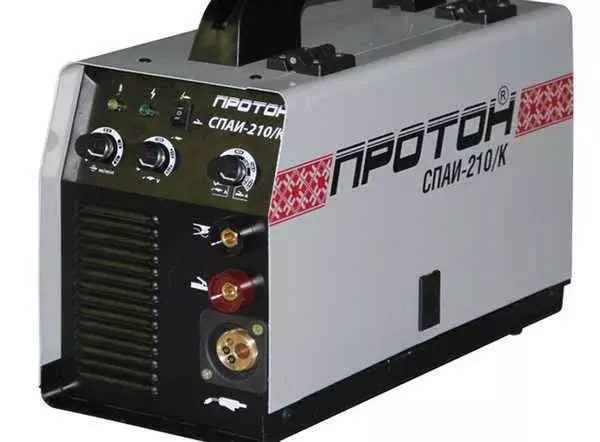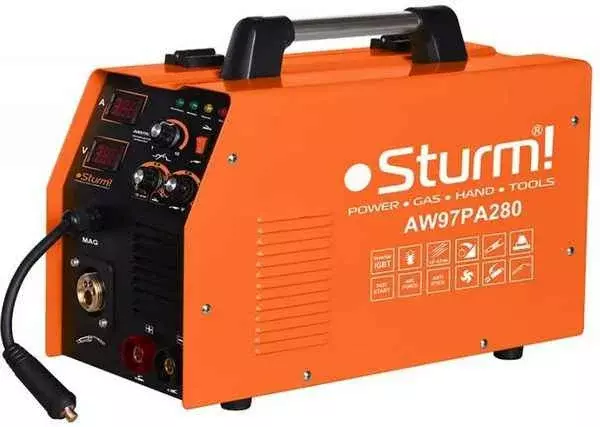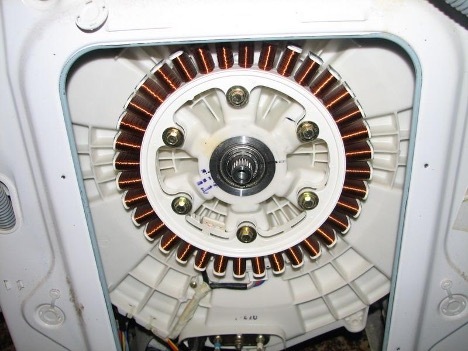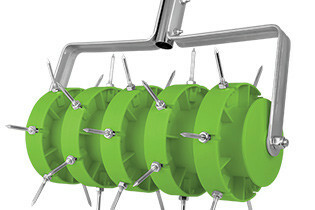A welding machine is used to join metals. It is used in production, industrial, repair, construction and household work to solve problems of different levels. Over the past few years, the demand for welding machines “for their household” has increased - every craftsman wants to acquire such a necessary tool to use it for his own purposes. But which welding machine to choose for a new user who has never dealt with such equipment? There are an incredible number of them. What are their pros and cons? What is the best welding machine for the home?
In this article, we will analyze what types of welding machines exist, the principle of operation, features and differences between welding machines. devices, the principle of operation of an inverter and a semi-automatic device, how does an inverter differ from a semi-automatic device, which is better: inverter or semi-automatic

The content of the article
- Types of welding machines
- Pros and cons of inverter welding
- Pros and cons of semi-automatic welding machines
- The design and principle of operation of the inverter for welding
- The design and principle of operation of the semi-automatic welding machine
- What is the difference between a semi-automatic and an inverter?
- Which is better: inverter or semi-automatic?
Types of welding machines
There are four types of welding machines:
- Transformer.
- Rectifying.
- Inverter.
- Semiautomatic.
Welding machines of transformer type. They work from a transformer. Electricity passes through it, inside the transformer it converts, and the output is energy with low voltage and high current strength. The transformer itself starts to consume more voltage.
Rectifier welds. In fact, this is the same as transformer ones, but with an additional unit. An additional block stabilizes the current - it comes to the transformer as a variable, the rectifier makes it a constant. Hence the name.
Inverter welding machines. The most popular type of welding machines. Differ from the previous sizes. In inverters, there are compact and small transformers, but the power of such devices is greater than that of large ones. The current is also stabilized, becomes constant with the help of a rectifier.
Semiautomatic machines are the second most popular type of welding. They can be based on any of the three types of power sources. Because of this, their weight, dimensions and price vary. A semiautomatic device differs from an inverter in the principle of operation - electrodes are used in inverter welding, wire is used in semiautomatic devices.
Pros and cons of inverter welding
Pros:
- Small size and weight.
- Small price.
- Easy to transport.
- High power.
- Suitable for most welding applications.
- They won't light up.
- Quality of work / seams.
Minuses:
- Not suitable for all metals.
- Not suitable for small, decorative, painstaking work.
Pros and cons of semi-automatic welding machines
Pros:
- Seam quality.
- High protection of internal elements.
- Additional functions - material heating.
- Suitable for all metals.
- Can be used for small, decorative, painstaking work.
Minuses:
- Big sizes.
- High consumption.
- Additional consumables are needed - a gas cylinder, wire.
- Not suitable for all jobs.

The design and principle of operation of the inverter for welding
The classic inverter consists of:
- Rectifier. Together with transistors, it stabilizes the current, making it constant.
- Filter. It protects the internal elements of the inverter from debris and interference that can break the device.
- inverter. The inverter itself consists of a heatsink that removes heat, transistors and a transformer.
- Control panels. On / off button, voltage regulators.
Electricity from the network goes to the transformer, where the voltage decreases and the current increases; passing through the rectifier-transistor, the current becomes constant, then passes through the filter from interference and flows to the electrode. A chain is created from the metal through the return and welding cables to the electrode. When the electrode is brought close to the metal, the circuit is closed, a high-temperature current arc is created, the metal and the electrode melt, which together form a connecting seam.
The design and principle of operation of the semi-automatic welding machine
Semi-automatic welding machine consists of:
- Protective gas cylinder.
- Sleeves for gas supply.
- Wire and its feed mechanism. The mechanism has three modes of operation - push, pull, mixed.
- Burners.
- Control panels.
The concept of operation of a semi-automatic device is similar to an inverter - electricity from the network goes to a transformer / rectifier / inverter. The voltage drops, the current rises, stabilizes, becomes constant. Then it passes through the filter and is fed to the wire. A chain is created from the metal, through the cables and to the wire. An arc appears between the wire and the metal, the temperature rises, the metal melts, it joins / a seam is created. The wire feed mechanism constantly feeds it, so you need to monitor the tension of the wire. At this stage, shielding gas is supplied, which creates a protective environment at the welding site. He protects himself semi-automatic. The gas can be argon and carbon dioxide.
What is the difference between a semi-automatic and an inverter?
First, the materials used. In the investor, these are the electrodes. In semi-automatic welding, this is wire. But in some semi-automatic devices, both electrodes and wire can be used.
Secondly, shielding gas. Semi-automatic machines have a gas that creates a protective environment so that interference and debris do not enter the network / inside the device. Because of it, moisture does not form on the working surface, therefore, the service life of the equipment is extended and the quality of welding is improved.
Thanks to the automatic wire feed, working with the semi-automatic is faster, easier and more efficient.
The quality of the seams - in semi-automatic machines they are better, thinner, because they create a homogeneous connection from the wire that the mechanism feeds. The units can be used for welding aluminum and other complex elements, sheet metals. If you try to weld them with an inverter, the seam will be large, uneven, unreliable, easily deformed.
Because of this, the scope of semi-automatic and inverter welding also differs. Semi-automatic machines are used for work with thin-sheet metals / expensive materials, for example, for welding car body parts, aluminum, in complex alloys.
Inverters are used in most areas - construction, repair, household.
Inverters are more compact and weigh less than analogues - semi-automatic devices need a gas cylinder to work, they themselves are larger than the first ones.
Work faster with inverter welds due to long pre-work with semi-automatic.
Which is better: inverter or semi-automatic?
Wrong question. This is the same as comparing a flat and Phillips screwdriver - they seem to be needed for the same function (twisting / unscrewing), but no one asks the question: “Which is better: cross-shaped or flat screwdriver?".
A semi-automatic is designed to do all the welding work, but it has a high cost work, long preparatory work, more mass, more consumption, while there is protection and better seams. Therefore, they are used only for some work - welding of a car body, thin sheets, complex or expensive materials.
The inverter is a compact welding machine that is best suited for domestic tasks. They have less weight, the cost of work, higher welding speed, they are easier to transport, but the quality of the seams is worse, they are not suitable for working with thin-sheet metals like aluminum, tin.
For small household, household, repair or construction work, it is better to take an inverter.
For car workshops and professional workshops - semi-automatic.


